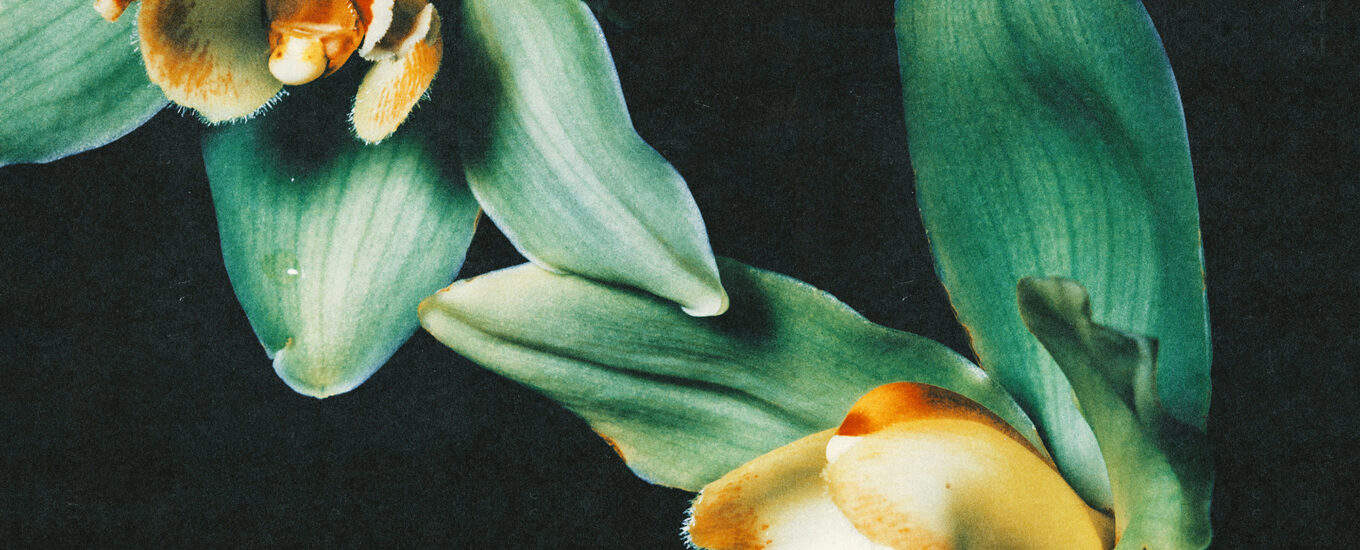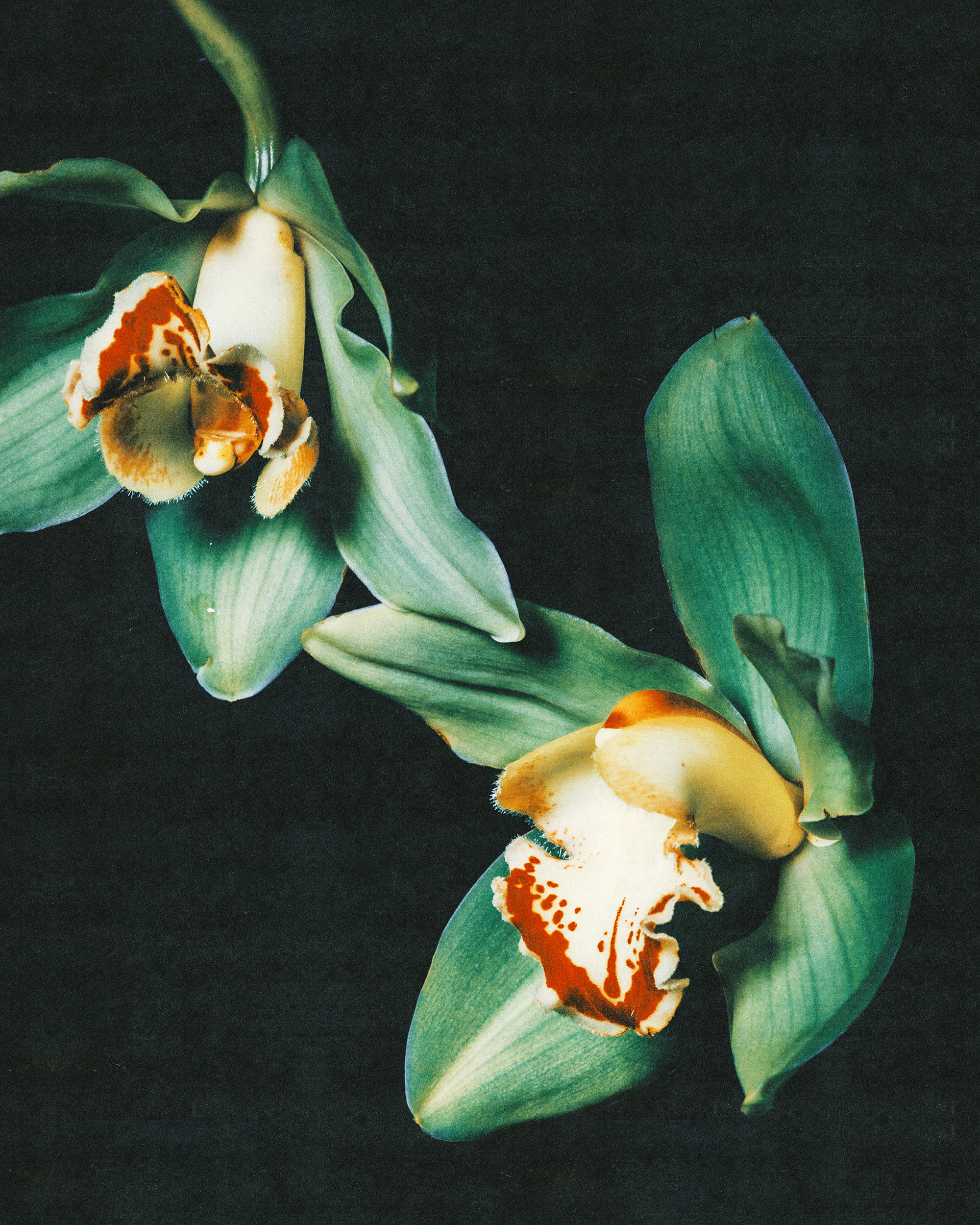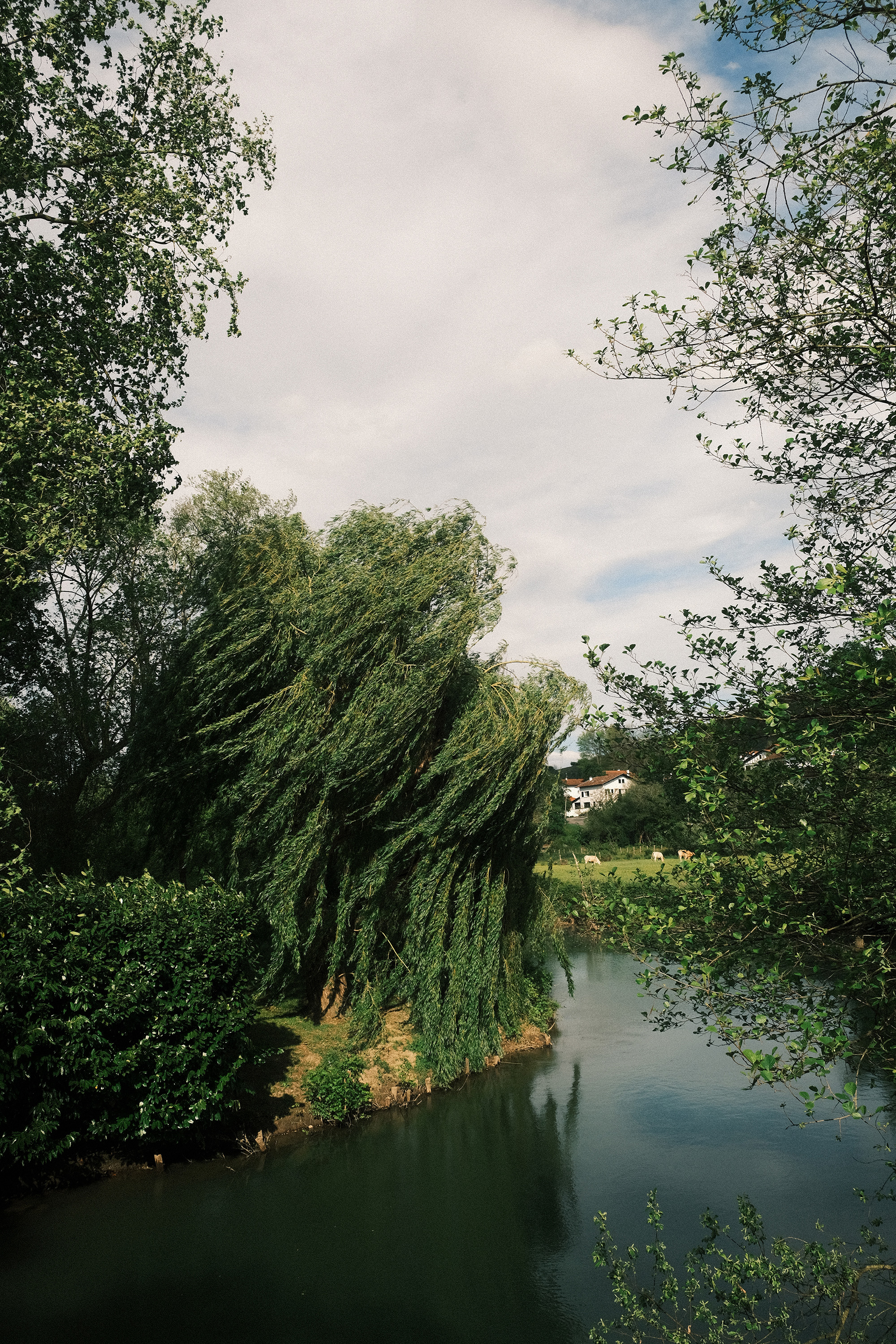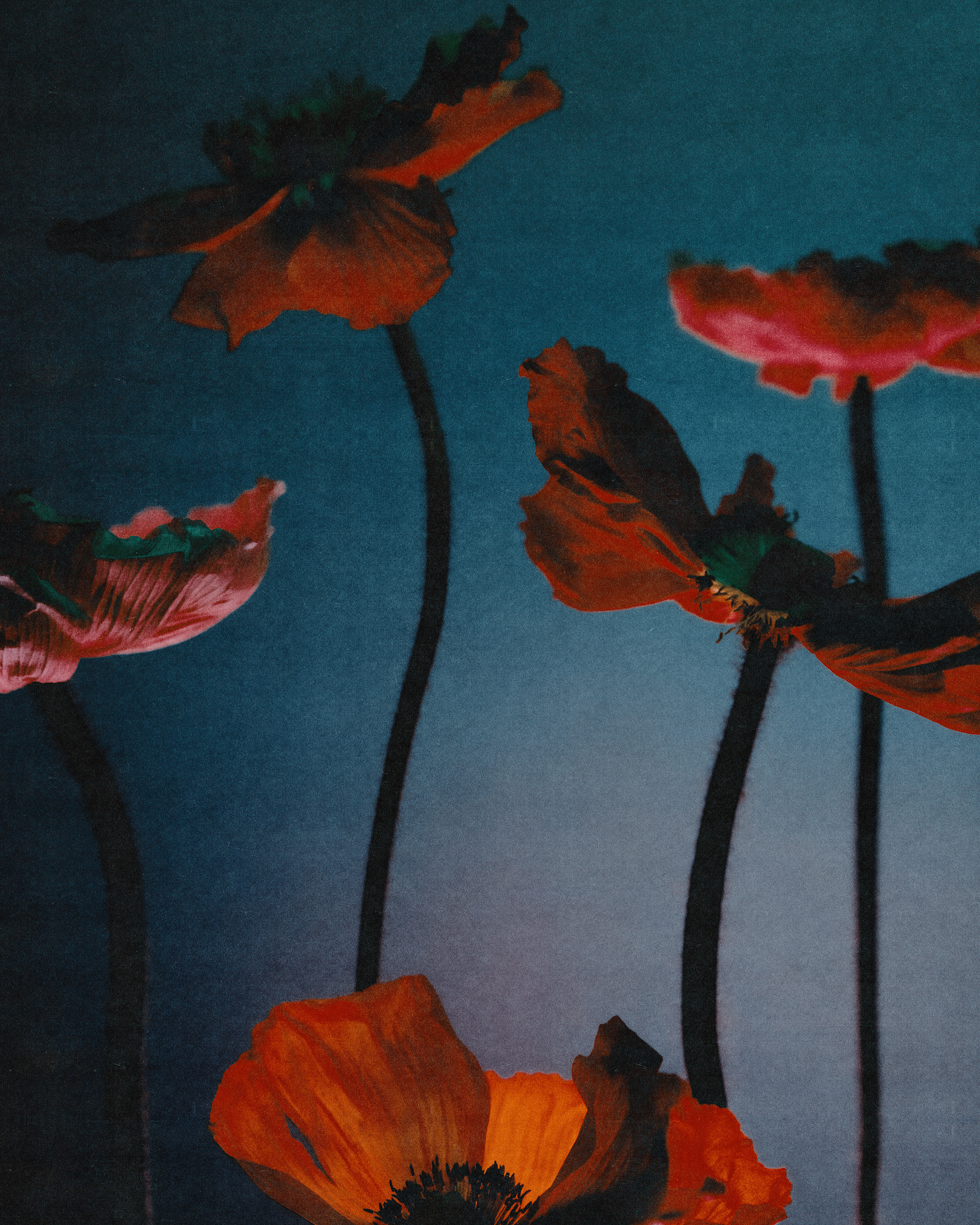Thais Varela: Flora and nostalgia
STORIES

The vivid detail and almost alien-forms of Thais Varela’s ‘Orquídea Cymbidium’ photo series recently caught our eye, so we reached out to the Basque Country based photographer to find out more about her floral explorations:
Tell us about yourself: where did your creative journey begin and what led you to photography?
I’d say my creative journey began in childhood – as it often does. During my school years, I felt that part of me was shut down. I wasn’t good at memorising things, but I was good at expressing myself – through writing, drawing, singing… yet none of that seemed to hold much value. I believed it, and ended up working in the family business until I turned 30. At that time, I had very little contact with my creative side, until I came across photography by chance. Through it, I started nurturing a part of myself that had long been repressed. I rediscovered possibility, a sense of my own path, and a language of expression. That’s when I decided to leave my job of fifteen years in customer service and take the leap into self-employment. It’s now been ten years since I started working as a photographer. Thanks to that decision, I’ve shaped a life full of experiences. Looking back, I can only feel grateful for having listened to myself. 
Flowers, fruits, and plants are recurring themes in your work. What draws you to these explorations of nature?
Flowers have always been part of my work. At first, they appeared more shyly, accompanying portraits I was taking. I used them as colourful elements, perhaps instinctively. The colour, shapes and anatomy of plants, fruits and flowers are constants in everyday life. They’re the most loyal gift Mother Earth gives us, and if we choose to, we can observe them as teachers of cycles.

I believe photography offers a beautiful gift to those willing to explore it – the gift of presence. In presence, there is observation, and in observation, you come across natural sculptures. In my case, they’ve made me want to share how I see them, what they make me feel. Although flowers are often described in terms of delicacy and softness, I’m interested in disrupting that perception. Through my lens, I tend to portray them in a more surreal, sometimes even brutalist way — as if revealing something that lies beyond their surface beauty. I explore how tension and contradiction can live inside something traditionally seen as fragile. Isn’t that also what art is about? Encountering something that ignites you, and using your own technique to reproduce it in a way that carries your DNA. I turn to nature for its beauty, its strangeness, its wonder.

We’re especially fond of your Orquídea Cymbidium series, which captures orchids in incredible detail. What inspired it and how did you create the images?
It’s funny because you never really know what people are going to connect with. This series has been widely shared, and thanks to that, it’s reached a wider audience. But I didn’t do anything extraordinary compared to the rest of my work. I simply followed my feeling and let the flower guide me. I chose these orchids because I was fascinated by their large size, their green shades mixed with red tones, and their almost alien forms. I created the images in my home studio – a small room with two lights, a table and a backdrop. It’s not a large or fancy setup, but for this type of photography, it’s more than enough. 
What do you look for when choosing a plant to photograph?
For the past three years, I’ve been working on a floral project called Flora and Nostalgia. It began from a desire to experiment with a specific type of lighting and explore still life as a genre. Until then, I’d only worked with natural light, but I felt a need to learn how to use artificial light. Looking back now, the project has taught me to create scenes using this kind of light – always from an instinctive place. Over time, this project has become not only a technical exploration, but also a conceptual one. I’m interested in moving away from the decorative and entering a more emotional space, where the floral isn’t just read as something beautiful, but also as something that can surprise. There’s something almost surreal and brutal in the way I compose, in how I light the flowers and isolate them in space. I’m drawn to that contrast – the unexpected twist that breaks away from traditional botanical imagery and opens up a new way of seeing.  When you work in a creative field, beyond the jobs that pay the bills, it’s essential to feed your unconscious self – to allow space for play without a “why”. In my case, this project, from technique to process, is full of that. I choose flowers based on the season, but also on impulse. Once I’m in the studio, my process is simple: I set up the lighting, place the flower in the centre, turn on my camera, put on headphones with music that stirs me from within, and begin a kind of dance around it. I move closer, observe it, shift it gently, explore angles, change the background, play with colours… and let myself go. It feels like a wordless conversation. Each flower takes me around three hours to photograph. That’s when I feel most connected to my intuitive creative side. Even after three years, it hasn’t become automatic – because every flower is different, and that difference still stirs admiration and emotion in me.
When you work in a creative field, beyond the jobs that pay the bills, it’s essential to feed your unconscious self – to allow space for play without a “why”. In my case, this project, from technique to process, is full of that. I choose flowers based on the season, but also on impulse. Once I’m in the studio, my process is simple: I set up the lighting, place the flower in the centre, turn on my camera, put on headphones with music that stirs me from within, and begin a kind of dance around it. I move closer, observe it, shift it gently, explore angles, change the background, play with colours… and let myself go. It feels like a wordless conversation. Each flower takes me around three hours to photograph. That’s when I feel most connected to my intuitive creative side. Even after three years, it hasn’t become automatic – because every flower is different, and that difference still stirs admiration and emotion in me.

What does a typical day in the life of an artist look like for you?
I don’t believe there’s such a thing as a “typical” day for an artist. The collective idea of what it means to be an artist is often distorted. Many of us, at some point, have bought into that story of the bohemian lifestyle without responsibility. My usual day includes replying to emails, planning the week, delivering or creating projects, setting up a schedule for social media or for ongoing work. I make time for creative catharsis, revisit my portfolio every so often to reflect on where I’m at, and keep a dialogue open with my process. I’ve learned to respect it. I start my day with coffee and finish it with tea. I take a 30-minute walk in nature every day. In the end, living as an artist – especially if it’s your profession – means finding a balance between the tangible and the intangible. That’s no small thing. There comes a point where you realise that’s what it’s all about: balance. And in that, nature is a great teacher. 
Do you have a favourite garden to visit or a place to immerse yourself in nature?
I’m very lucky to live in the Basque Country, in northern Spain, near the French border. Nature is right on my doorstep. If I want to be by the sea, I only have to cycle for 30 minutes. If I need the stillness of the river, it’s right in front of my home. And if I want to feel the earth, I’m surrounded by mountains and towering trees. So immersing myself in nature is easy – and something I’m always deeply grateful for. I’ve tried living in big cities during different phases of my life, but I always felt a little lost and somewhat withered. Coming back home, with that awareness, has allowed me to see everything with new eyes. I don’t have one specific garden I always go to, but when I travel, I always make a point of visiting botanical gardens. Observing the plant life of different places is endlessly enriching. 
What are you working on next?
At the moment, I’m very involved in my role as a mentor. I studied coaching and, with the tools I’ve gathered, I’ve created a method designed to support other photographers in their creative journeys. It’s the beginning of a path that’s already teaching me a lot – both as an artist and as a person. The creative process is a vast journey, and I’ve developed this method to help those who trust me understand their own process. I balance this work with my artistic practice and with other projects that arise along the way.
Lastly, since we’re the Garden Museum, could you share your personal relationship with plants, gardening and nature?
Something that strikes me is how much flowers seem to be part of my path. My surname is Ramos (like branches), my partner’s surname is Flores (flowers), my paternal grandmother was called Flora, and my maternal grandmother owned a flower shop. It feels like it was inevitable that I would end up walking a path filled with flowers. Photographing flowers has also made me curious about them – learning what they need, where they thrive, interesting facts… All this knowledge has been such a rich and daily companion throughout my floral work. My mother has a deep devotion and creative flair when it comes to plants. She has a beautiful garden and expresses her creativity through it. For a long time, I felt I hadn’t inherited that gift – my plants never lasted long. But this year, I’ve committed to caring for them more consciously. And when I do, I feel as though I’m also caring for myself. That’s what this year has given me: a good place. Starting and ending the day by watering your own garden is such a grounding habit – one I believe will stay with me from now on.
—